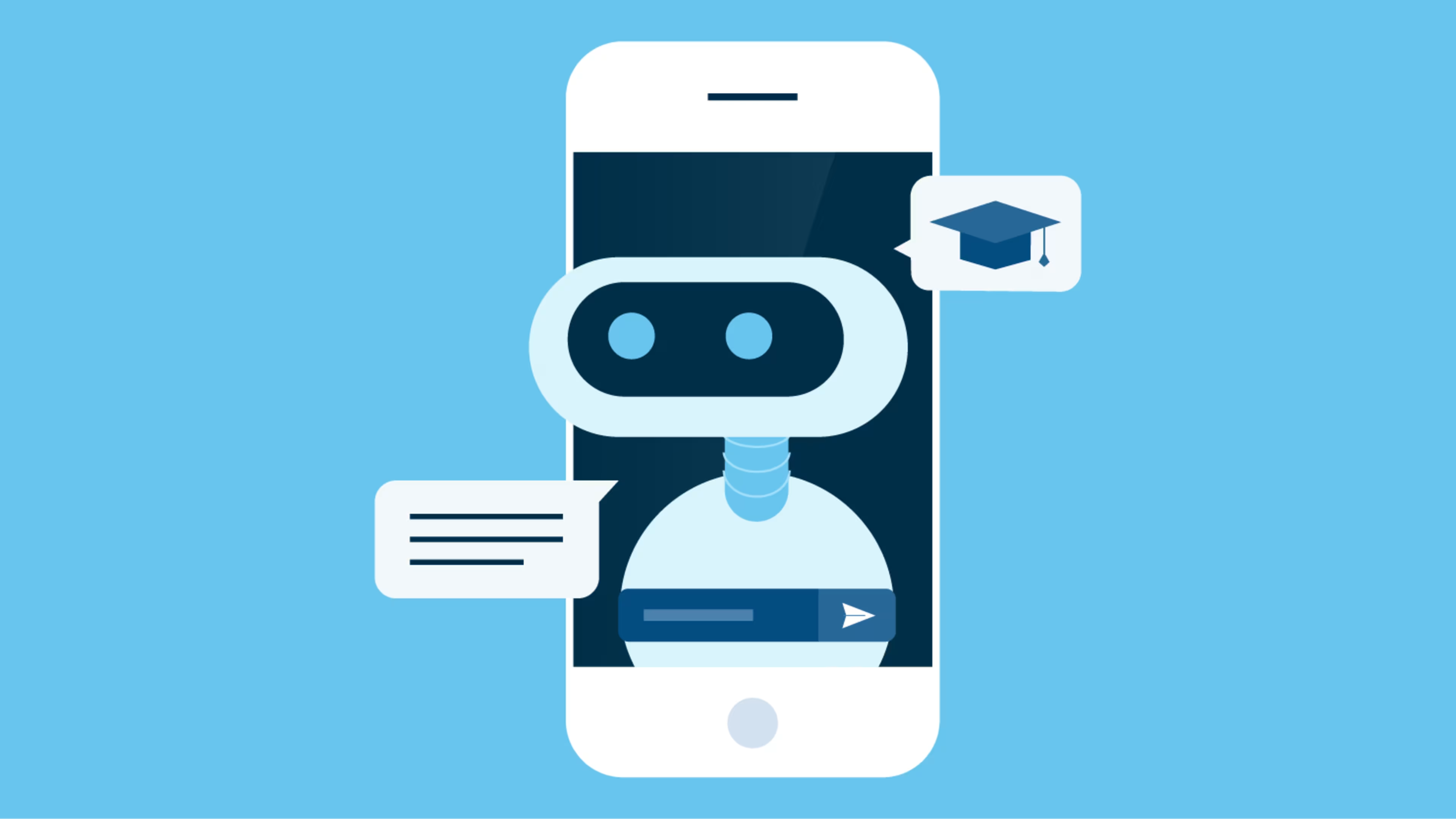Chatbots are quickly becoming a cornerstone of customer experience. Curious what they are? Check out this comprehensive guide.
According to Gartner’s Hype Cycle, chatbots are less than two years away from reaching a stable, accepted level of use for higher education institutions. This means that if you aren’t currently utilizing them, you’re at risk of falling behind (full content available to Gartner clients).
If you haven't considered an AI chatbot until this very moment, don't worry: this resource will help you get the ball rolling.
What are chatbots?
Chatbots are a computer program with a conversation interface that allows the chatbot software to hold a conversation with human users via textual (and auditory in some advanced cases like Google Assistant) methods. Typically, these programs can be set up as widgets on websites, messaging platforms, social media sites, and mobile apps.
Chatbot software can be basic tools that offer responses based on prebuilt scripts or more advanced solutions such as virtual assistants that perform transactions on behalf of human users.
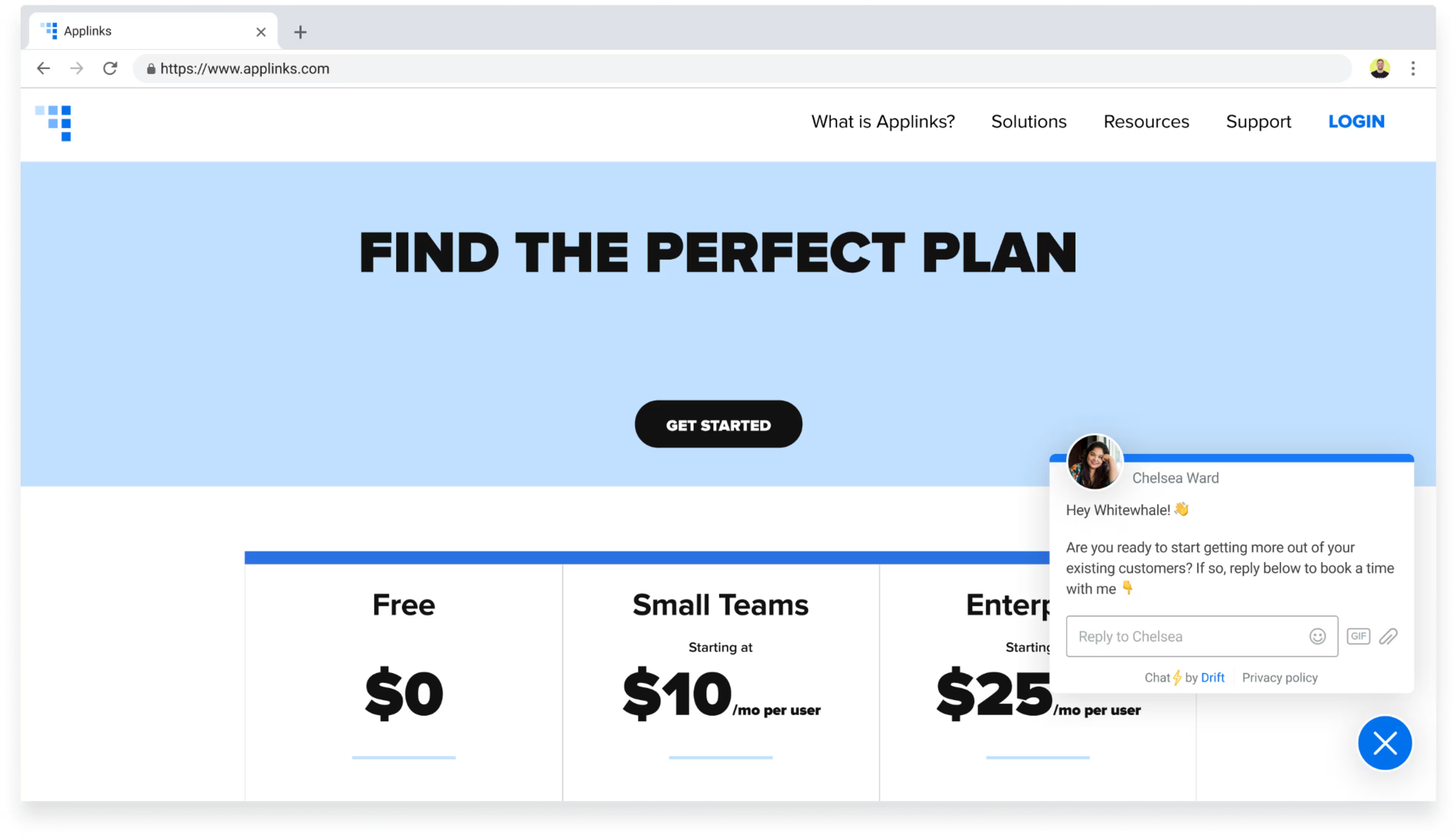
What a chatbot's live chat box can look like on a webpage (Source)
There are basic chatbot solutions (known as scripted bots) that are easy to create and low-cost but can only offer preprogrammed answers. On the other end of the spectrum is a contextual bot with natural language processing (NLP) capabilities, which can not only understand nuanced language but also execute tasks on users' behalf.
Businesses that want advanced capabilities in their bot need to have the right IT team in-house or partner with a third party that has specialized domain knowledge.
How can SMBs leverage chatbots?
More than ever, chatbot technology is becoming attainable for small and midsize businesses (SMBs) to use as a means of facilitating growth by providing more comprehensive user solutions.
According to Gartner, chatbots represent the number one use of artificial intelligence among enterprises (full content available to Gartner clients).
What does that mean for small and midsize businesses? More and more companies are making new bot programs, which means more competition in the space, which—of course—means more affordable solutions.
It also means more software developers are making chatbots for different uses and industries, including niche services designed to help your business type instead of wasting money on a bunch of features and services you might not need or want.
A bot means your customers get faster replies to their concerns, better customer service, and a more personal connection to your business.
After all, the alternative is calling your store or customer service department or emailing support. Utilizing a bot not only saves customers time, but also frees up your team to fulfill more important tasks or help with complex customer concerns.
Key takeaway
The ideal SMB that can benefit from a chatbot platform is one with a need to regularly communicate with users or customers who might have concerns or questions about their product or service.
Very small businesses without a customer experience team/support staff or a swiftly growing business that is receiving many support queries should consider using chatbots.
Areas impacted by chatbots
Put simply: if your business routinely interacts with people to provide support or answer questions, you can probably benefit from a chatbot.
Whether it’s internally to answer employee questions about PTO or company policies, a customer wanting to know how to return a product, or a student asking how to contact their advisor, chatbots are useful in a variety of areas. We’ll be taking a closer look into three common industries and functions that can utilize chatbots to their full potential.
Higher education institutions
Higher education primarily uses chatbots to interact with students about their courses and questions/concerns about facilities or programs, such as how to sign up for courses, where certain buildings are on campus, parking information, etc.
Remember: The majority of students attending higher education institutions are from Generation Z, which means they’ve always had access to quick answers/information. These students will want—and expect—instant communication from their educational institution.
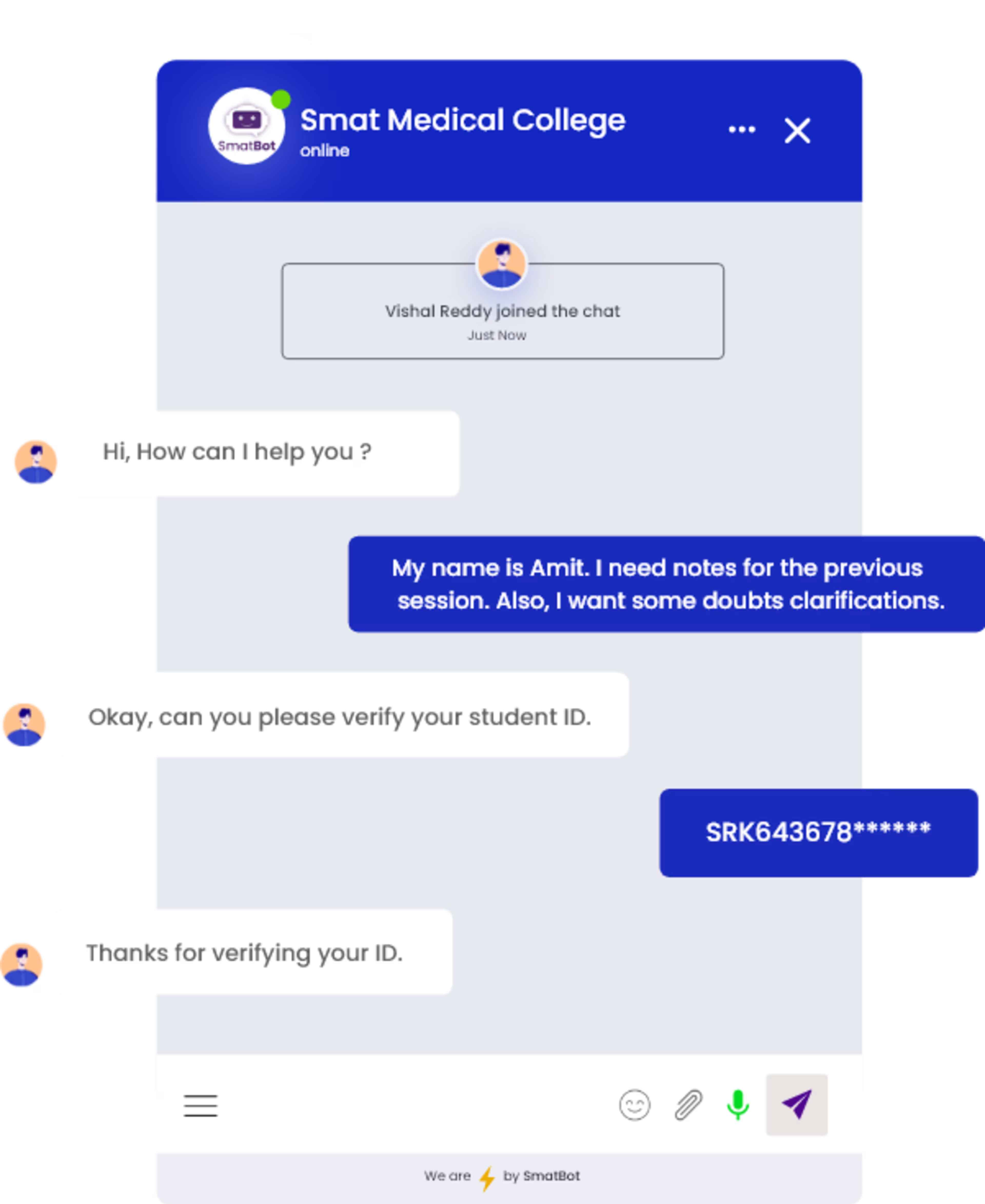
An example of how a student might use a chatbot (Source)
One of the primary benefits a school gains from implementing chatbots is that they offer 24/7 support for student queries, which can be great for students who keep non-standard hours. It also frees up your administrative staff to focus on more high-touch and high-effort problems.
Another subtle benefit of many bot solutions is that they often offer support in multiple languages, which can be crucial for international students who need assistance.
Key takeaway
Chatbots are an elegant, instant solution for students who want efficient and quick answers to their concerns rather than combing through a more traditional FAQ page.
eCommerce
The three primary ways that eCommerce businesses utilize chatbots is to help complete a purchase, offer product recommendations, and provide a better customer experience and support.
A customer might have a question about which type of product is best for their specific needs, and a chatbot can take that query and provide a link to several options. The customer can even make their purchase directly from the bot, which streamlines the buying process and provides an excellent customer experience.
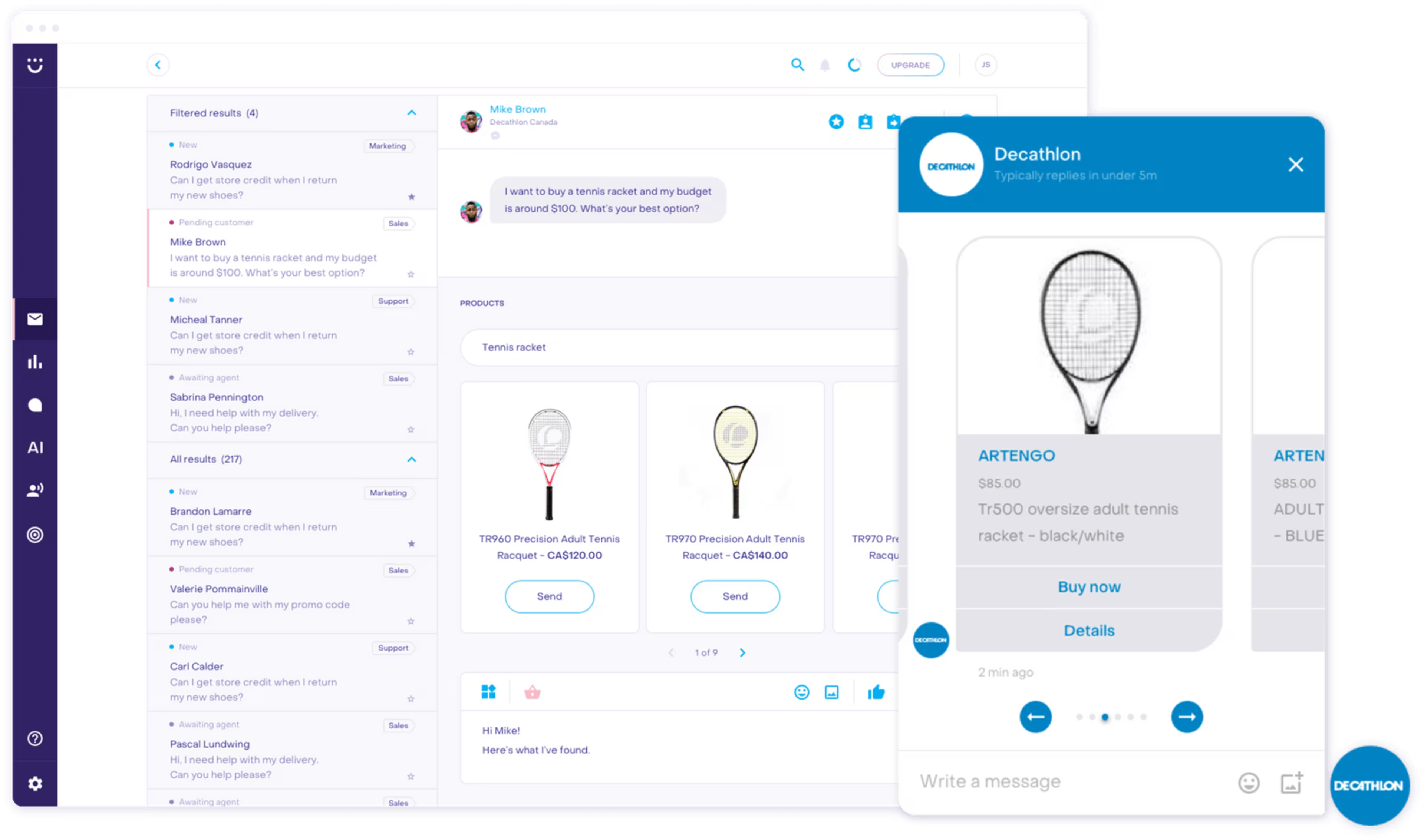
An example of how a customer might use a chatbot to make a purchase (Source)
Of course, customers might also have questions or concerns about their purchase or returning a product that wasn't what they were looking for. An FAQ page can help in this instance, but a chatbot can provide concrete information and link directly to any page or service on your website that resolves their issue.
A more subtle benefit is the lack of emotions from chatbots. It’s inevitable to encounter upset or emotional customers in the retail/eCommerce space, so an entirely neutral, emotionless support option isn't the worst tool to have in your toolbelt.
Key takeaway
Your eCommerce business can use chatbots to communicate with and resolve customer concerns 24/7 as well as help provide customers with individualized shopping experiences that will have them coming back for more.
Human resources
By pulling information from a hodgepodge of back-end systems (document management system, your HRIS, etc.) and serving it to workers via tools they use daily (e.g., email, collaboration software), HR chatbots act as a sort of pocket HR manager, ready to answer worker questions and process requests in real time with minimal human intervention.
Much like how higher ed institutions use chatbots to help students navigate their schedules and life on campus, an HR-focused chatbot can help manage employee queries and concerns by providing the information they’re asking about quickly and easily without the need for an HR employee’s intervention. It also has the added benefit of being available 24/7.
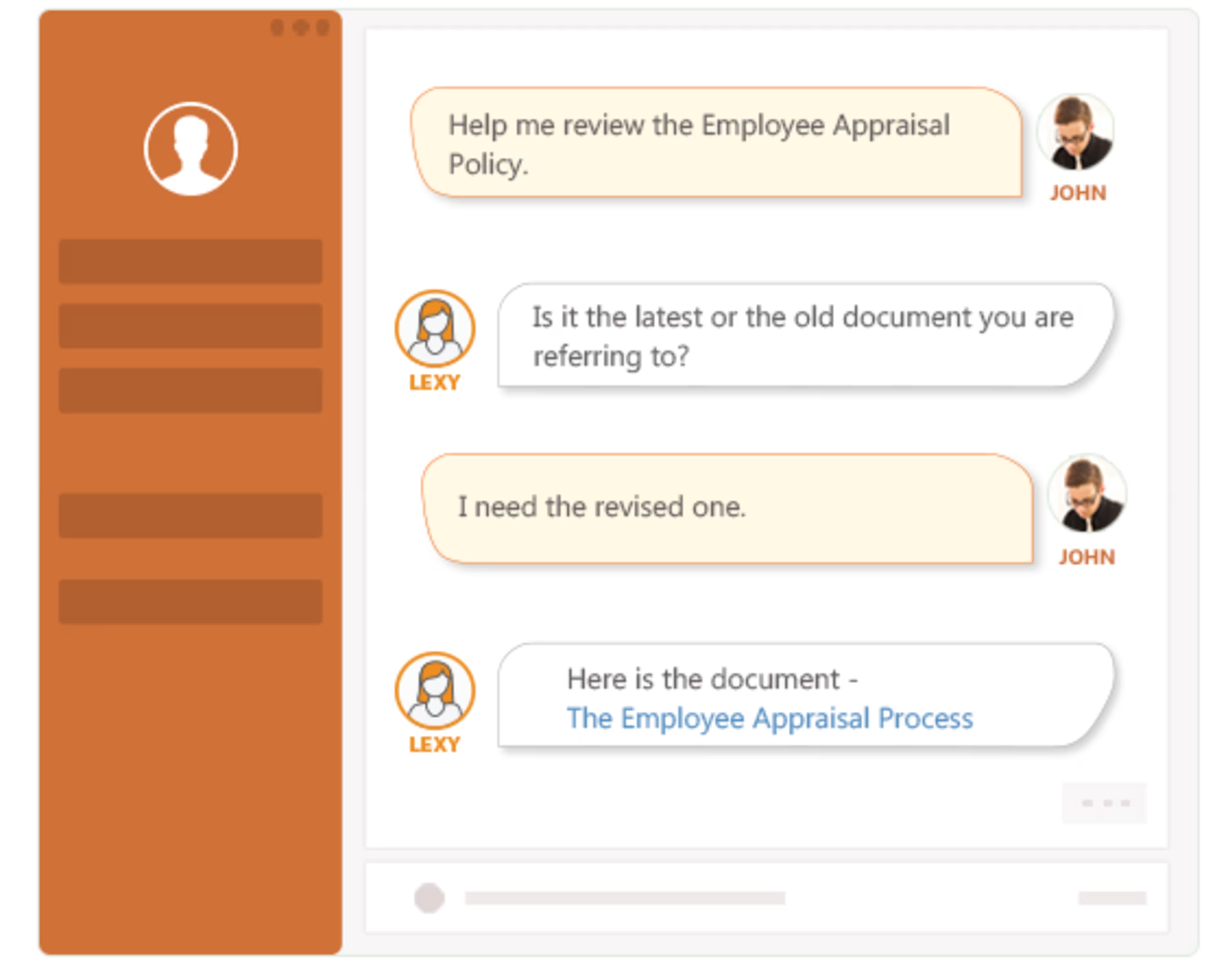
Example of how HR chatbots are used by employees (Source)
Chatbots can also help reduce the massive amount of time spent filtering through applicants and scheduling interviews and phone screens by automating the process. Instead of emailing each applicant, a chatbot can instead gather all the information needed to continue the process by setting up interviews and collecting data.
Key takeaway
HR chatbots are useful for improving employee engagement within your organization, making the employee experience more user-friendly, and helping with recruitment.
Software systems that support chatbots
Oftentimes, you can gain access to chatbots as a standalone Software-as-a-Service (SaaS) option from providers who specifically offer chatbots. However, if a comprehensive solution that includes more customer support options and features sounds better for your needs, check out the following software systems that can include chatbots among their features.
Student engagement platform
A student engagement platform is a centralized tool where students can access their academic information and personal profiles. These tools allow students and faculty members to communicate and access information in real time, and can also be used to promote events, increase attendance, and maximize student involvement.
These platforms aim to help educational institutions increase student participation on campus and in the classroom and often utilize chatbots to help accomplish these tasks.
Customer service software
Customer service software is a ticketing system that documents, tracks, and resolves customer queries. It collates customer requests from multiple channels (phone, email, live chat, chatbots, and social media) into a single portal so your team can quickly and easily address queries.
These tools allow multiple members of your team to work on each ticket, making it easier for departments to collaborate on meeting customer needs. They also provide detailed reports and insights into customer interactions, helping organizations assess the quality of their customer service.
Conversational artificial intelligence platform
Conversational artificial intelligence platforms help develop and implement solutions for automating customer service, customer engagement, and human-computer interactions through natural language processing.
These tools allow users to converse with a chatbot to help solve their problem or answer their query.
Chatbots not quite in the budget?
Here are a few manual ways to get a similar result
If you aren’t quite ready for a fully fledged chatbot (maybe it’s not in the budget or you don’t have quite enough inquiries to justify the investment), you’re not out of luck when it comes to customer support solutions that can do some of the same things … albeit with a little more manual effort.
Live chat: Live chat solutions offer some of the same instantaneous support solutions that your customers want (and expect) without automation. Instead of the chatbot doing the work, you’ll have to manually respond to live chat queries as they come in. You can either use live chat software or, if you have social media accounts, a more affordable option is to promote your direct messages as a customer support channel. Something like Facebook Messenger is also a great, low-cost solution for businesses.
Frequently asked questions (FAQ) page: If you don’t already have an FAQ page on your website or social media pages, you should consider one. They’re a tried and tested solution for self-servicing customers who might not want to wait for an emailed response or to sit on hold for support. Start cataloging your most frequently asked questions and make an easily accessible page containing comprehensive answers. Make sure to include relevant links to important documents and information on this page.
Want help finding a chatbot?
Check out our list of chatbot software systems. Filter by features or cost, compare different software options, and read hundreds of reviews from business owners just like you to find the best fit for your needs.
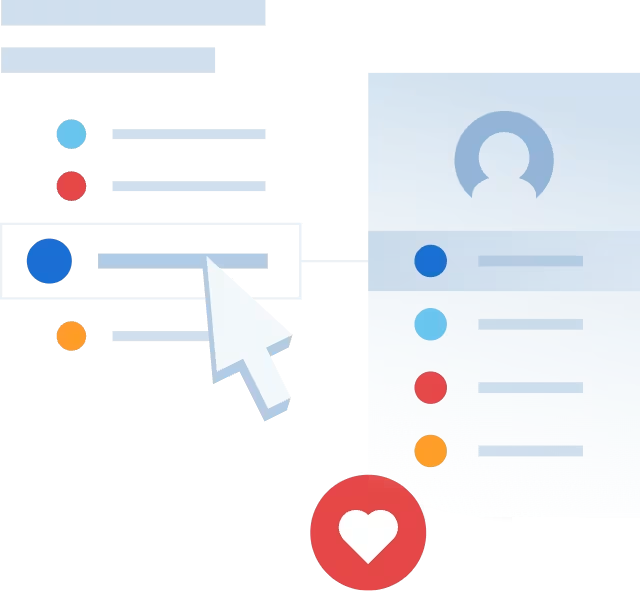
Thinking about hiring an AI company to help your business set up chatbots? Browse our list of top artificial intelligence companies and learn more about their features in our hiring guide.
